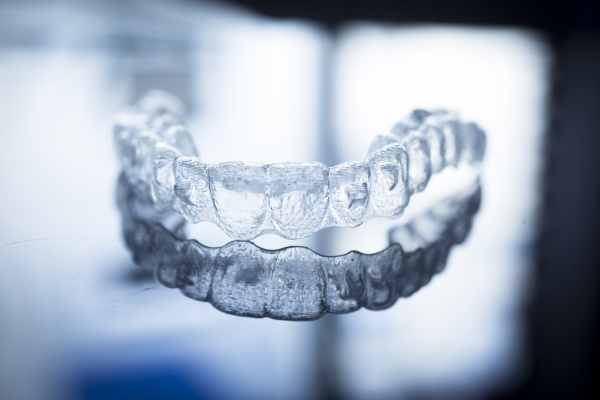All too many people who could benefit from visiting an Invisalign dentist for treatment put it off as they fear the process might be invasive or too long and complicated. By gaining a clearer idea of what the Invisalign process involves, you can make a more informed decision as to whether or not treatment is appropriate for you.
How the Invisalign process works
Most patients report the process of Invisalign as not being complicated at all and are ecstatic with their new smile once treatment is over. The following is a complete overview of how Invisalign works and what to expect during the process.
The initial consultation
The first step towards straighter teeth through Invisalign is to schedule an initial consultation with an Invisalign dentist. On the first visit, they will conduct an oral examination of the patient, may take X-rays and other testing procedures and determine whether the patient is eligible for Invisalign. After the examination, the Invisalign dentist can then discuss the options with the patient and educate them on what can be expected throughout the process. Once both the Invisalign dentist and patient agree to treatment, a dental impression is taken, which is then used to mold the clear aligners.
Treatment process
Once the Invisalign aligners are ready, the patient can begin treatment. It is important to follow the treatment instructions closely and wear the aligners as much as possible, preferably for at least 20 hours each day. Each patient should also work hard to keep their aligners clean and practice good oral hygiene throughout treatment. Most Invisalign dentists have patients receive a new aligner several times each month as the teeth begin to shift into a more appropriate position. As long as the patient follows the treatment instructions and makes it into all scheduled appointments, they can complete the process in a relatively short amount of time.
Follow-up care
After the teeth are in an ideal position and the patient is happy with their smile, the process is not yet over. Whether teeth are straightened through braces or Invisalign, they have a tendency to try and shift back into their original position. Subsequently, it is very important to wear a retainer after treatment to ensure teeth shifting does not occur. At first, the retainer may need to be worn for a large portion of the day, and the need for the retainer gradually decreases until it only needs to be worn while sleeping. Your Invisalign dentist should be there to guide you through the entire follow-up care process.
Talk to an Invisalign dentist about treatment
No one should have to feel insecure about their smile due to misaligned teeth, and Invisalign is a great way to improve the appearance of your smile and gain more confidence. If you are interested in learning more about how Invisalign works and want to start the process, consult with us today and schedule a time to meet with one of our Invisalign dentists.
Are you considering an Invisalign dentist in the Boca Raton area? Get more Invisalign dentist information at https://www.drkarolineasbell.com.
Check out what others are saying about our services on Yelp: Read our Yelp reviews.
Related Posts
Common Services You Can Expect from a General Dentist
Regular visits to a general dentist are essential for maintaining optimal oral health. A general dentist is responsible for routine check-ups and cleanings and provides a wide range of services to …
The Different Types of Dental Implant Restorations
Dental implant restorations have transformed dentistry by offering a versatile and reliable solution for replacing missing teeth. This approach to smile restoration seamlessly combines durability and natural aesthetics, restoring oral function …
How a Dental Cleaning Can Brighten Your Smile and Help Your Oral Health
Using tools and equipment, your dentist can provide dental cleaning to your teeth and gums in ways that most people cannot do at home. Most of the time, cleaning your teeth …
Veneers to Fix Tooth Imperfections
Veneers, also known as dental porcelain laminates, are a great way to fix tooth imperfections without getting fillings and crowns, which are procedures that can cost thousands of dollars. They are …


